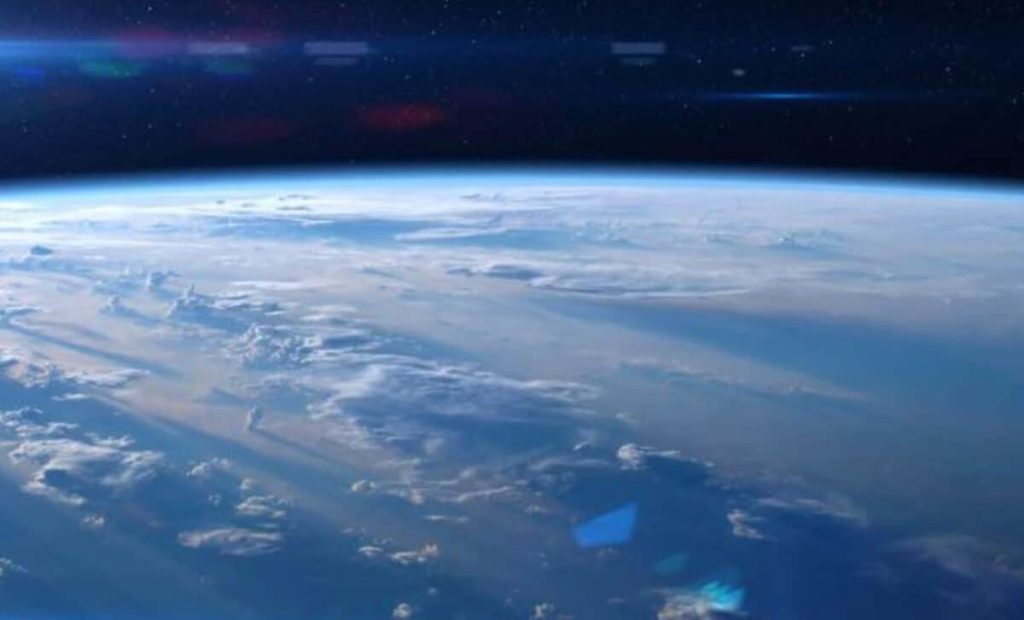Context:
Scientists from ETH Zurich suggests that spraying millions of tonnes of Diamond Dust in the upper atmosphere could help cool the Earth and combat global warming.
More on the news:

- As per this Geo-Engineering Solution, shooting 5 million tonnes of diamond dust into the stratosphere each year, over the course of 45 years, could cool our planet by an impressive 1.6 degrees Celsius.
- Similar approaches have been proposed using other materials like sulfur, calcium, aluminum, and silicon, which aim to reflect solar radiation back into space, thus contributing to cooling.
- In addition to these materials, the idea of deploying mirrors in space to reflect sunlight away from Earth has also been explored as another effective Geoengineering option.
- Despite these innovative ideas, global temperatures have continued to rise, currently standing about 1.2 degrees Celsius higher than pre-industrial levels and approximately 1.45 degrees Celsius warmer in 2023.
- To meet the goal of limiting warming to 1.5 degrees Celsius, as outlined in the 2015 Paris Agreement, global emissions must be reduced by at least 43% from 2019 levels by 2030.
About Geoengineering:
- Geoengineering refers to large-scale efforts aimed at changing the Earth’s climate to combat global warming.
- There are two main approaches: Solar Radiation Management (SRM) and Carbon Dioxide Removal (CDR).
About Solar Radiation Management (SRM)
SRM involves deploying materials in space to reflect incoming solar rays, preventing them from reaching Earth.
It draws inspiration from natural events like volcanic eruptions, which release sulfur dioxide that forms particles in the atmosphere, reflecting sunlight and temporarily cooling the planet.
- For example, the 1991 eruption of Mount Pinatubo led to a global temperature drop of about 0.5 degrees Celsius.
Researchers have looked into different materials for SRM, such as sulfur, calcium, and sodium chloride to replicate this natural cooling effect.
Challenges in SRM:
- Technological and Cost Challenges: Implementing SRM comes with significant technological and cost challenges.
- Unintended Consequences: Large-scale manipulation of natural processes can lead to unexpected consequences, impacting global and regional weather patterns and rainfall distribution significantly.
- Ethical Concerns: Altering natural sunlight levels could harm agriculture, vegetation, and biodiversity, potentially negatively affecting some species.
About Carbon Dioxide Removal (CDR)
CDR technologies that remove carbon dioxide (CO2) from the atmosphere, including:
- Carbon Capture and Sequestration (CCS): Captures CO2 emissions from factories/industries and stores them underground.
- Carbon Capture and Utilization (CCU): Use captured CO2 for various industrial uses.
- Carbon Capture, Utilization, and Storage (CCUS): Combines utilization and storage of CO2.
- Direct Air Capture (DAC): Extracts CO2 from the air using large “artificial trees” for storage or utilization.
Challenges with Carbon Dioxide Removal Technologies:
- Issues with Carbon Capture and Sequestration (CCS): Oxford and Imperial College (London) studies suggest that depending heavily on CCS to meet climate goals by 2050 could be impractical and very expensive (potentially over $30 trillion).
- Storage Limitations: Finding safe places to store captured CO2 is becoming more challenging.
Ocean fertilization
It is geoengineering method aimed at reducing ocean acidification and global warming by supporting the growth of phytoplankton, which convert CO2 into oxygen through photosynthesis.
- Microscopic phytoplankton perform around 50% of the world’s photosynthesis.
Just like fertilizer can be added to gardens to help plants grow faster, different fertilizers can be added to oceans to help phytoplankton grow faster and consume more CO2.
The Future of Geoengineering
- Despite the difficulties and challenges associated with it, geoengineering is an important area for research. As the impacts of climate change become clearer, methods like SRM and CDR are receiving more attention.
- Meeting climate targets will likely require some form of these technologies. It’s essential to continue exploring and carefully considering the consequences of implementing geoengineering in the future.

